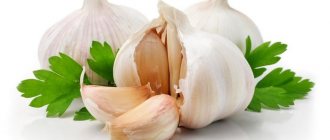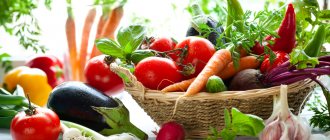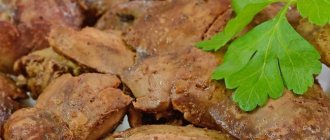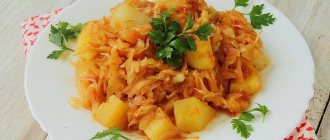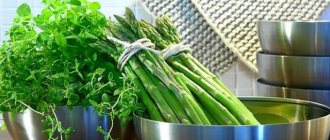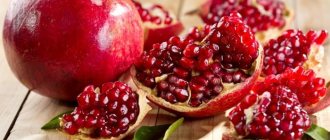Author:
gastroenterologist Anton Smirnov
4 minutes
3945
During breastfeeding, a woman may feel hungry much more often and stronger than usual, and this is normal. The process of making breast milk in the body increases daily energy requirements by about 500 calories. There is also an increased need for specific nutrients such as protein, vitamins D, A, E, C and B12, selenium and zinc.
Here are some healthy and tasty foods that you should include in your diet while breastfeeding, provided that you have no contraindications to them:
- Fish and seafood: salmon, seaweed, shellfish, sardines;
- Meat and poultry: chicken, beef, lamb, pork, liver;
- Fruits and vegetables: berries, tomatoes, sweet peppers, kale, garlic, broccoli;
- Nuts and seeds: almonds, walnuts, chia, flax and hemp seeds;
- Healthy fats: avocado, olive oil, coconut, eggs, full-fat yogurt;
- Fiber-rich starches: potatoes, butternut squash, sweet potatoes, beans, lentils, oats, quinoa, buckwheat. Note that it is recommended to introduce legumes into your diet no earlier than the baby turns three months old in order to avoid problems with excess gas formation;
- Other foods: tofu, dark chocolate, kimchi, sauerkraut.
It is also worth minimizing your consumption of fast food and sugary breakfast cereals, which can be replaced with muesli and granola, for example.
Why are some products not allowed?
Fresh fruits and vegetables during breastfeeding should be included in the diet of a nursing mother. Some foods can be introduced starting from the first days of a child's life, while others should be delayed. Caution is associated with the risks of allergic reactions and disturbances in the functioning of the child’s physiologically immature gastrointestinal tract - for the first 6 months he can only absorb mother’s milk. If the mother consumes heavy food, problems appear in the form of diarrhea or constipation in the baby. To prevent the occurrence of disorders, you need to know that:
- Fruits growing within the region are introduced into the diet.
- It is better to choose high quality products, that is, fruits grown in natural conditions without nitrates and other ripeness accelerators.
- You should not buy seasonal, summer fruits and vegetables in winter; they are treated with special substances for long-term storage.
- Products that activate intestinal motility and provoke gas formation, such as white cabbage, are excluded from the diet.
- The best option for storing perishable foods is freezing. This method allows you to preserve taste, color and all useful substances.
When breastfeeding, you can eat both fresh and cooked vegetables. It is necessary to remove beets and other foods that have a rich color so as not to provoke diathesis. No need to eat citrus fruits.
What products are allowed and in what quantities
Meat is on the list of the most important menu items for breastfeeding. It is rich in protein, which is essential for the growth of a child. When choosing, you should give preference to lean varieties, in particular lean beef. It is better to avoid offal for a while. A good option would be poultry (turkey and chicken). At the same time, it is better to steam dishes for a nursing mother. An alternative would be boiled meat. A high percentage of protein content is found in fish, chicken eggs and dairy products.
| Product (weight 100 g) | Protein content | Carbohydrate content | Amount of fat | Quantity (kcal) |
| Boiled breast | 29,8 | 0,4 | 1,8 | 137 |
| Boiled lean beef | 25,7 | 0,2 | 8,1 | 175 |
| Turkey meat (boiled) | 25 | 0 | 10,4 | 197 |
| Boiled hake fish | 18,5 | 0 | 2,3 | 95 |
| Boiled cod fish | 17,8 | 0 | 0,7 | 78 |
| Cottage cheese 1% | 16,3 | 1,3 | 1 | 79 |
| Boiled carp fish | 16 | 2 | 3,7 | 102 |
| Boiled eggs | 12,7 | 0,7 | 11,5 | 157 |
| Milk (fat content 1%) | 3,3 | 4,8 | 1 | 41 |
Equally important is the consumption of foods high in calcium. This microelement is important for building and strengthening the skeleton and growth of teeth in a child. Dairy products contain large amounts of calcium.
It is necessary that the diet of a nursing mother of a newborn must include different types of porridge (buckwheat, rice, corn, millet). They contain fiber to improve intestinal motility and a set of important vitamins and microelements.
Bread can be consumed, but in small quantities. In this case, it is better to choose bran.
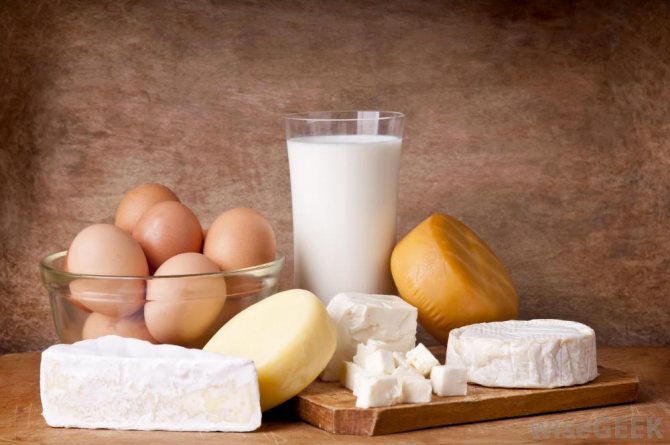
Fermented milk products and milk
In the first weeks after giving birth, nursing women are not recommended to drink milk, but it can always be replaced with fermented milk products. So, doctors recommend introducing kefir as one of the first dairy products after childbirth. It is especially useful for those women who suffer from constipation.
Of all the dairy products offered in stores for nutrition during lactation, it is better to choose:
- kefir;
- fermented baked milk;
- unsweetened yogurt;
- sour cream;
- cottage cheese;
- butter;
- hard cheese.
Despite the fact that cheese has a high percentage of fat, it is well absorbed in the body and does not cause digestive problems. In limited quantities, a nursing mother can use cheese to make salads and sandwiches.
Which vegetables to choose
Vegetables are a necessary component in creating a proper diet for nursing women, but such foods can cause colic in infants. In connection with this feature, vegetables are usually divided into two groups: recommended and those that should be avoided in the first months after pregnancy.
You should choose the following healthy products in the store:
- potatoes (it is not recommended for a nursing mother to consume more than 3-4 tubers per day);
- broccoli;
- cauliflower;
- carrots (they should be introduced into the diet carefully, since beta-carotene often causes an allergic reaction in the baby);
- beets (in small quantities);
- zucchini;
- pumpkin (it should be introduced gradually and in small quantities).
It is better to replace raw foods with baked vegetables. (On our website you can also read in more detail how to best eat pumpkin and beets, carrots for a nursing mother)
What sweets can mom eat?
Some women find it extremely difficult to completely give up sweets, and this is not necessary. When sweets enter the body, they promote the production of serotonin. It is responsible for improving well-being, lifting mood, and reduces the risk of developing postpartum depression. However, many sweets can cause allergic reactions in a baby. Relatively safe in this regard are:
- kozinaki;
- halva;
- Turkish delight;
- marshmallows;
- marmalade
Chocolate is allowed in small quantities, but it must be without fruit additives. (You can read more about marshmallows for mom here)
Which fruits to choose
A mother's diet while breastfeeding should include plenty of fruit. They are sources of vitamins and important microelements. In addition, these products will help a woman regain strength and health after childbirth. However, not all fruits are equally beneficial for a child.
Doctors advise introducing into the diet:
- apples (in the first 2 months it is better to replace fresh fruits with baked ones);
- pear (you can start eating when the baby is 3 months old);
- peaches (you may be allergic to them, so it is not advisable to eat them in the first months);
- watermelons and melons (they can be introduced in the first months, but you need to remember to follow the measure.
(You can also read more about apples, pomegranates, kiwis, persimmons, watermelons and melons for a nursing mother)
What drinks to choose
Proper nutrition during breastfeeding requires compliance with the water regime. Every day a woman’s body should receive 2-2.5 liters of fluid. The simplest and most versatile drink is water. It must be bottled, boiled or filtered. In addition, you can add to your diet:
- homemade fruit drinks and compotes;
- 1-2 cups of green tea;
- drinks containing chicory, rose hips (coffee substitutes);
- weakly brewed tea.
If a woman wants to drink a cup of coffee, the drink should not be strong. In addition, it is better to do this immediately after feeding the baby. In this case, the effect of caffeine will be neutralized by the next feeding. (you can read about drinks with rose hips here)
Allowed fruits and vegetables
When choosing vegetables and fruits when breastfeeding, you need to take into account the main criteria:
- Hypoallergenic - it is better to buy fruits that do not have a bright color, that is, it is better to prefer green or yellow apples to red ones.
- Familiarity - there is no need to look for benefits in overseas products; they are processed before long-term transportation.
- Seasonality - the fruits must ripen on their own in summer cottages by the time they are sold in the region.
Attention! During breastfeeding, it is better to buy vegetables and fruits grown at home; the quality of these products in supermarkets is low.
The following fruits and vegetables are often well accepted by the newborn's body and can be included in the menu of a nursing mother:
- Apples are the safest fruit to feed breastfeeding, according to nutritionists, but mothers should not eat them in unlimited quantities. The composition contains a lot of iron, it can cause constipation in infants.
- Pears - can be consumed during the season of their natural ripeness, but in limited quantities. 1 fruit per day is enough. If consumed excessively, they provoke colic and active gas formation.
- Plums are considered a hypoallergenic product despite their bright color. They should be consumed in moderation; large amounts cause diarrhea.
- Peaches, apricots and nectarines. They are well accepted by the newborn’s body, but they should not be introduced into the menu before 3 months.
- Banana does not grow under natural conditions in Russia, but you can eat it from the first days of breastfeeding.
- Zucchini is well digested and easily absorbed, has little effect on the digestive process.
- Potatoes – an allergy to potatoes is excluded, but you need to eat them in limited quantities in the first month.
- Broccoli - will help replenish the supply of iodine in the female body weakened by pregnancy and childbirth.
- Cauliflower - unlike white cabbage, does not provoke acute reactions from the organs of the digestive system, therefore, in the first 6 months, the GV time is a successful substitute for preparing vegetable stew.
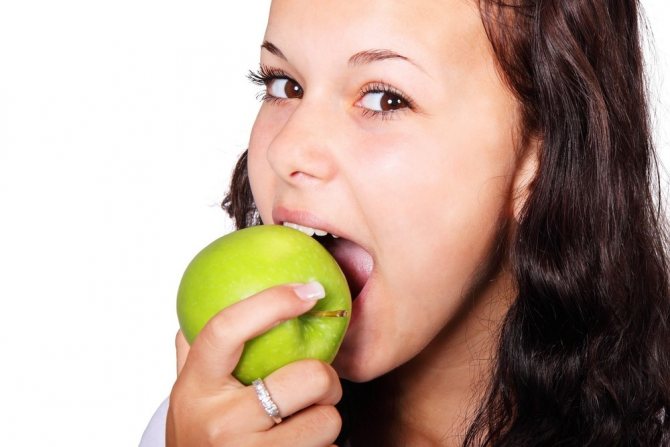
Knowing what vegetables and fruits can be eaten while breastfeeding, a woman will be able to create a balanced diet. You need to understand that for a newborn’s body to fully develop, it needs not only plant fiber.
In the first month
A nursing mother can eat fruits and vegetables, starting from the first day of breastfeeding, but you need to know what foods are allowed and how to correctly introduce them into the menu so as not to harm the newborn. If you have breastfeeding, you can try a banana on the first day after birth, but first it is enough to eat no more than 50 g - this is a third of a medium-sized fruit. This product will help cope with postpartum depression and saturate the body of mother and child with potassium.
Green or yellow apples are no less useful, but they cannot be eaten in their entirety without heat treatment. A fresh apple can be eaten after first removing the peel - it contains heavy substances that provoke stagnation of the gastrointestinal tract in a child. In the first days, you can eat them baked or cook compotes without sugar.
Attention! When breastfeeding, you can eat dried apricots and prunes in the first month.
Vegetables included in the menu include zucchini and cauliflower. Potatoes should also be in the diet of a nursing mother. You can eat steamed, boiled or stewed foods without adding fat.
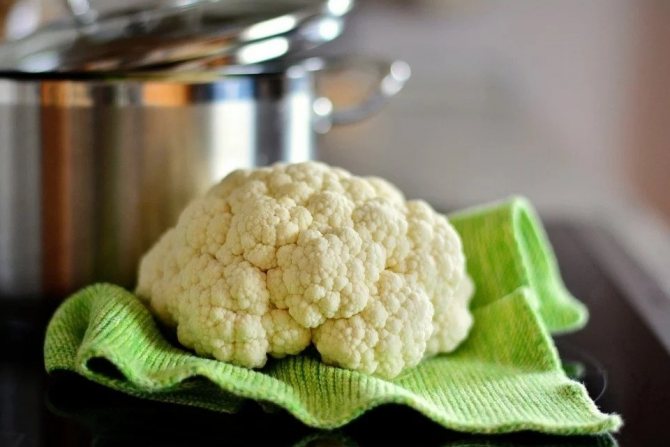
In the second month
Starting from the second month of lactation, the range of vegetables and fruits consumed by a woman expands significantly. If the mother has no negative reactions to apricots and peaches, it can be introduced into the diet. Peaches are especially useful; this fruit contains substances that calm the nervous system and help the process of formation of brain cells in a child.
They contain large quantities of magnesium and beta-carotene, which is why they provide increased protective properties of the immune system. The maximum concentration of harmful substances in fruits is contained in the peel, so it is better to remove it before consumption. They should be introduced into the menu during breastfeeding carefully; on the first day, it is enough to eat 1 apricot without peel and monitor the child’s reaction. If rashes and digestive disorders do not appear, the fruits can be left on the menu.
Starting from the second month of breastfeeding, you can expand the list of vegetables consumed. You can add carrots to your usual foods, but in small quantities and carefully. It can be added to soups and vegetable dishes, controlling the baby's reaction.
In the third month
Pediatricians say that by the third month the child’s gastrointestinal tract functions normalize, and he reacts less to the introduction of new products to the menu. However, this is not a reason to break the rules - allergic reactions cannot be ruled out, so a new product is introduced to the menu in the morning. Exotic fruits and citrus fruits are prohibited until at least 6-8 months of breastfeeding.
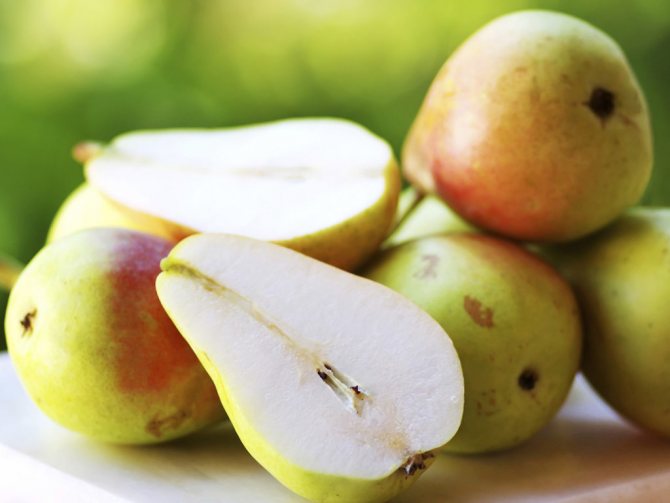
In the third month you will become familiar with the following products:
- plum;
- pear;
- watermelon;
- melon;
- berries.
Of the listed products, watermelon is an allergenic one. Before use, you need to ensure its quality. You can eat no more than 200 g per day. It is better to prepare fruit drinks or compotes based on berries; it is not recommended to eat them in their pure form. Mom can try boiled beets and broccoli.
From the fourth month
Starting from 4 months you can eat persimmon. All products introduced up to this point remain on the menu; the diet is expanded by introducing eggplants, fresh cucumbers and tomatoes. At this stage, vegetables can be eaten fresh, but in small quantities. The maximum amount of tomato and cucumber is 100 g per day. Eggplants are eaten only after heat treatment; before cooking, the peel must be removed, as it contains harmful substances.
Vegetables and fruits in the first month of a baby’s life
As a rule, the main concerns are caused by the fetus in the first weeks after birth, when the mother is just moving away from the expected event, and the baby is just adapting to an unknown world. At this time, the baby’s gastrointestinal tract begins to mature, and mother’s milk should contain only substances that are safe and beneficial for his health. Of course, plant fruits are a source of vitamins and minerals, but at the same time they can irritate the intestines, cause diarrhea, and increased gas formation. Therefore, vegetables and fruits should be chosen especially carefully during breastfeeding in the first month.
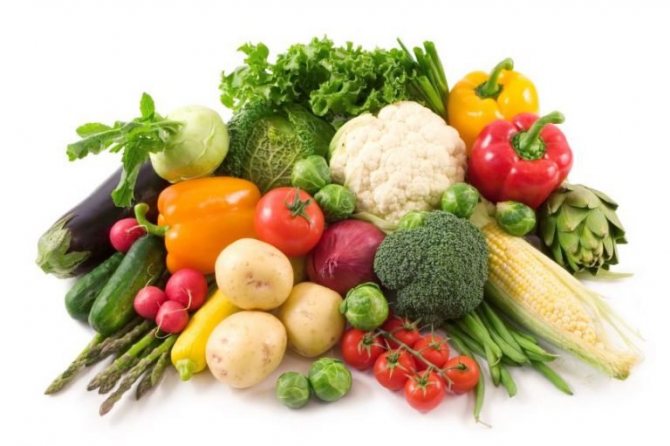
You should temporarily refuse or try with the greatest caution the following fruits:
- Cucumbers. With their minimal calorie content and hypoallergenicity, it is these vegetables that often become the cause of flatulence.
- Grapes can also cause colic.
- White cabbage also causes increased gas formation. By the way, an individual reaction of this type can also occur to cauliflower. However, when stewed and boiled, these products usually lose a number of substances and no longer cause a special reaction in the body.
- Pears often cause intestinal colic not only in babies.
- Plums have a well-known laxative effect, which can cause discomfort in the baby.
- Peaches and apricots are fruits that sometimes cause allergies, but quite rarely. You can try them in the first month, but, of course, be careful, since gas formation increases after eating literally any fresh fruit.
- Tomatoes. Despite their rich composition, it is still better not to eat such vegetables during breastfeeding in the first weeks of a baby’s life: the red peel can cause intestinal irritation and an allergic reaction.
- Legumes are traditionally excluded not only after the baby is born: their consumption is the most well-known cause of gas formation. When the baby stops having seizures - at about 3-4 months, you can eat boiled legumes.
- Onions and garlic can be tasted in stews and soups, but in very limited quantities. These foods are believed to change the taste of breast milk.
- Any exotic fruits, as well as fruits that are new to you while breastfeeding, can cause not only allergies, but also indigestion in a newborn.
Beets, carrots, and eggplants can cause a negative reaction due to the fact that the baby’s gastrointestinal tract is simply not yet mature.
Prohibited fruits and vegetables
When breastfeeding, fruits and vegetables must be hypoallergenic, therefore the following are excluded from the diet:
- citrus fruits;
- grape;
- strawberries;
- raspberries;
- cherry;
- radish;
- tomatoes;
- beets;
- white cabbage.
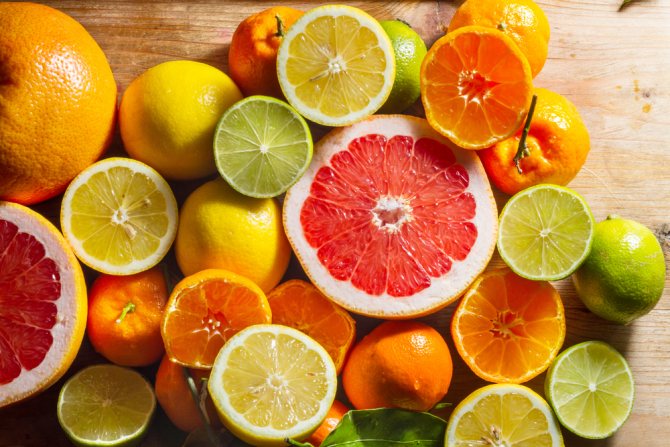
The above fruits and vegetables do not pose a danger to nursing mothers, but they can provoke undesirable reactions from the child’s gastrointestinal tract, so their introduction into the diet during breastfeeding should be delayed.
What a nursing mother should not eat
Avoid red and exotic fruits. Even if you ate kiwi throughout your pregnancy, you should introduce this fruit into your diet when your baby is 3 months old.
Remember a small list of fruit restrictions:
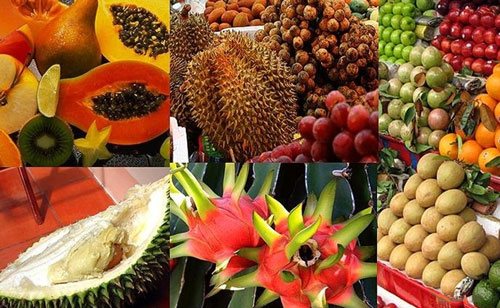
- Exotic fruits and vegetables. You should not try avocado or pineapple while breastfeeding, even if these fruits contain the highest amount of vitamins.
- Citrus. The first citrus in the diet will appear as a slice in tea when the baby is three months old. Oranges should be tried a month later.
- Grape. One berry will not cause any harm, but a handful of grapes eaten can cause severe bloating.
- Red berries. Raspberries and strawberries can provoke diathesis.
- Cucumbers. Based on the traffic light principle, it’s possible, but it’s better after the baby is 3 months old. You should especially avoid store-bought vegetables that go on sale before the start of the vegetable season.
- Tomatoes. Do not eat allergenic varieties; give preference to hypoallergenic yellow tomatoes.
- White cabbage. If you really want to, replace it with Chinese cabbage or lettuce leaves. The vegetable increases colic, which often affects newborns.
- Peas. Eliminate all legumes, as the child’s body is not yet ready to digest such foods. After a few months, try stewed peas, but in small quantities.
- Onion and garlic. Avoid eating these products fresh. Heat-treated vegetables will improve the taste of cooked dishes and benefit the mother's body.
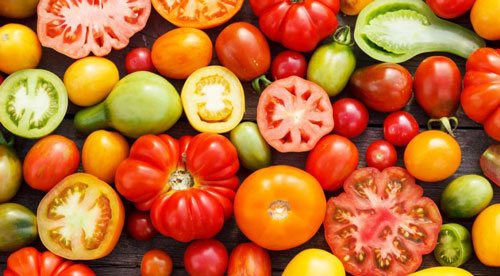
Useful video
Share this post
- Related Posts
- Limoncello liqueur: how to drink at home?
- List of fatty varieties of sea and river fish
- How to properly brew coffee in a Turk on the stove?
- What can you cook for your husband for dinner, lunch and breakfast?
- How to properly eat and cut mango?
- Recipes for stews and canned food for the autoclave for home canning
Effect on lactation
The volume of breast milk produced depends on the measures a woman takes to maintain lactation. It is necessary not only to put the baby to the breast on demand, but also to eat properly. Certain foods, particularly plant foods, help increase breast milk production. For example, fresh fruits and vegetables such as:
- carrot;
- gooseberry;
- Red currants;
- watermelon;
- blueberry;
- dill;
- radish.
Attention! Consumption of radish may cause the milk to become bitter and the baby to refuse to feed.
Dairy products and proper nutrition: to eat or not to eat?
Who can and who can't drink milk?
The source of rumors about the need to limit the consumption of milk and dairy products is lactose intolerance.
This is a genetic mutation that results in a deficiency of the enzyme that breaks down milk sugar (lactose). Consumption of milk in this case leads to abdominal pain, diarrhea and nausea.
In Africa, Southeast Asia and America, lactose intolerance is almost 100%; in Russia the percentage is lower, although some studies suggest that about half of Russians are lactose intolerant - 48%.
Overall, unless you're dairy intolerant, there's no reason to avoid it—research suggests that in adults, consuming dairy improves body composition and promotes weight loss.
In addition, milk consumption reduces the risk of developing type 2 diabetes, cardiovascular disease (especially stroke), and milk has a positive effect on bone mineral density, but is not associated with the risk of fractures.
What about fermented milk products?
Fermented dairy products - kefir, fermented baked milk, yogurt, yogurt, cottage cheese, hard cheeses - also contain lactose, but in negligible quantities, since fermentation processes have occurred in them.
Most often, even people prone to milk sugar intolerance have enough “strength” to cope with fermented milk products.
If you also have a reaction to fermented milk products in the form of nausea and digestive disorders, then try to find a source of calcium in other foods - legumes, broccoli, soy products, oranges. Consult your doctor - perhaps he will offer an effective solution to the problem.
They say that dairy products help the intestines and strengthen the immune system?
This is partly true. The intestines contain about 4-5 kg of microflora, which really helps to cope with various diseases - microflora stimulates the differentiation of the body's immune cells, so it is important to maintain its condition in a normal state.
Effect on the baby
When fruits and vegetables are consumed correctly during breastfeeding, they benefit the child:
- Potatoes restore metabolism and remove excess water and salts from the body.
- Carrots promote the formation of vision organs.
- Broccoli contains vitamin C.
- Beets cleanse the child’s body and eliminate constipation.
- Zucchini removes toxins and replenishes water balance.
- Pumpkin restores intestinal motility.
- Apples strengthen the immune system.
- Peeled pears relieve constipation.
- Banana has a calming effect on the central nervous system.
- Apricot and peach restore digestion.

Fruits and vegetables for breastfeeding, table
The table will help you understand the timing of the introduction of individual fruits and vegetables during breastfeeding:
| Product | GW month for introduction to the menu |
| Banana | From birth |
| Potato | |
| Pears | |
| Cauliflower and broccoli | |
| Zucchini | |
| Apples | |
| Carrot | From 2 months |
| Peach | |
| Apricot | |
| Plum | From 3 months |
| Watermelon | |
| Melon | |
| Tomato | |
| Eggplant | From 4 months |
| Cucumber | |
| Persimmon | |
| White cabbage | Not earlier than 6 months |
| Citrus fruits | |
| Celery | |
| Radish | |
| Red berries |
Fruits and vegetables should be in the diet of a nursing mother, but they should be introduced gradually, according to the age of the child. The basic rule of nutrition during breastfeeding is moderation and balance. Failure to comply with the standards will lead to allergic reactions, decreased milk quality and gastrointestinal problems in the child.
Proper introduction of fruits into the diet
A nursing mother should gradually introduce new fruits and juices into her daily diet. It is advisable to adhere to the rule - no more than one new product every three days. You can allow a small dose in the first half of the day, and a possible allergy reaction in the baby may appear in the evening. If you notice spots or rashes on the skin, you must avoid eating this fruit, keeping a pause for about a month, after which you can try it again. A woman should remember the slow maturation of the baby’s digestive tract, as a result of which easy adaptation to a new product occurs. If the test was adequate, you can eat 200-300 grams of fruit.
A woman should be aware of her own body’s reaction to the product. If rejection was observed before pregnancy, then there is no need to be guided by its beneficial properties, trying to force yourself to eat.
It is important to realize that each baby is unique and the body's reaction can be unpredictable. Some children can easily accept raspberries or currants, while the skin of others will break out in a rash from a harmless pear. In any case, a woman should follow general recommendations, since severe allergies that a child suffered in childhood can cause skin and respiratory diseases. Thus, you need to understand which fruits are allowed and which should not be consumed under any circumstances.
We present to your attention a list that every nursing mother should look through before going to the store.
